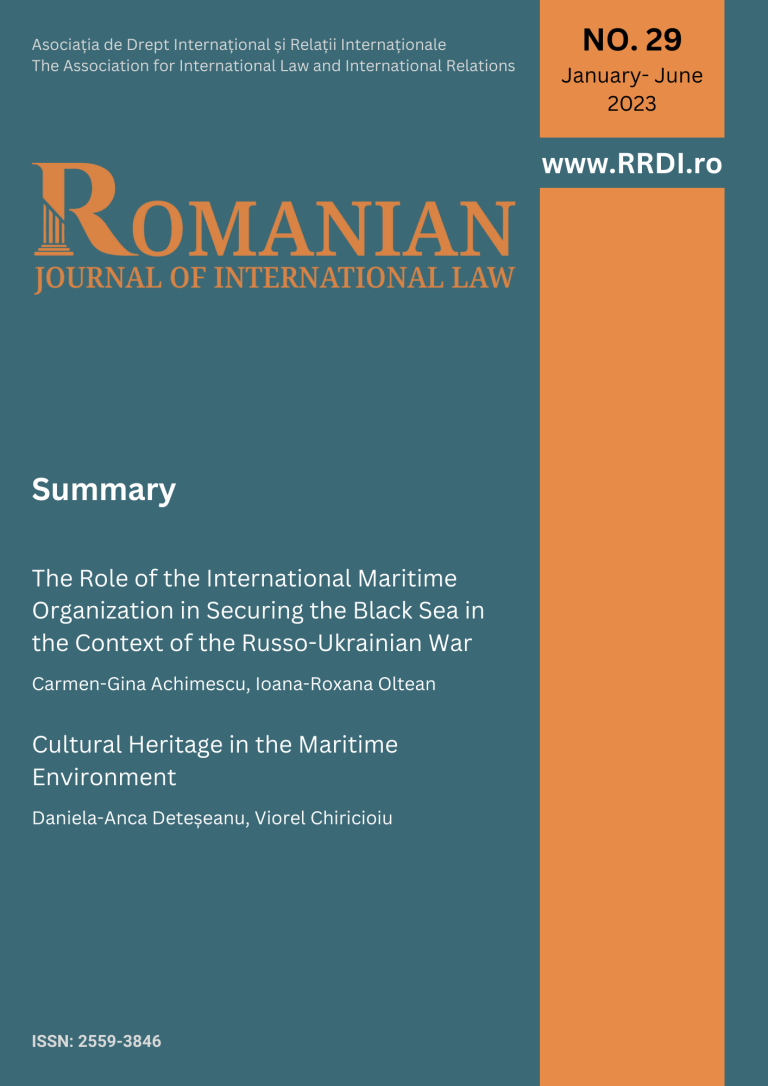Laura-Maria CRĂCIUNEAN-TATU*
Abstract: The aim of this paper is that of presenting the precedential value of the International Court of Justice ’s judgment in the Maritime Delimitation in the Black Sea (Romania v. Ukraine Case) , delivered by this court on the 3rd of February 2009. The subject matter of the dispute concerned the establishment of a single maritime boundary delimiting the continental shelf and the exclusive economic zones between Romania and Ukraine in the Black Sea. Thus, the paper will first give a general overview of the ICJ’s jurisprudence in maritime delimitations cases before 2009 (Section II); it will continue with a brief presentation of the main principles and jurisprudence lines reiterated and/or established by the ICJ, in 2009, in the Maritime Delimitation in the Black Sea Case (Section III); it will then touch upon and briefly analyse the next three cases on maritime delimitations in respect of which the ICJ delivered judgments on 2012, 2014 and 2018 (Section IV) and, finally, conclude by underlining the precedential value of the ICJ’s judgment in the Maritime Delimitation in the Black Sea Case for the jurisprudence of the ICJ in maritime delimitations cases (Section V).
Key-words: maritime delimitation, continental shelf, EEZ, Black Sea, Serpents’ Island, equidistance method, three stages methodology in maritime delimitations, maritime boundary, UNCLOS, base points, provisional equidistance line, disproportionality test, equitable result
*Associate Professor of Public International Law at Lucian Blaga University, Faculty of Law, Sibiu, Romania, Member of the UN Committee on Economic Social and Cultural Rights (2017-2020) and Member of the Council of Europe’s Advisory Committee of the Framework Convention for the Protection of National Minorities (2016-2020), e-mail: laura.craciunean@gmail.com. The opinions expressed in this paper are solely the author’s and do not engage the institution she belongs to.

